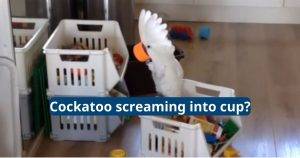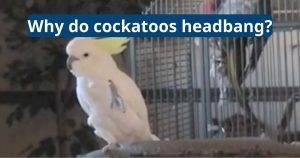The Moluccan Cockatoo Lifespan

Moluccan cockatoos, also known as salmon-crested cockatoos, can live up to 70 years in captivity. Their long lifespan makes them one of the most demanding pet parrots to keep. If you are thinking of adopting one, discuss the responsibilities with your family to ensure that they will be able to provide enough care for the bird.
Age at maturity
The lifespan of a moluccan cockatoo can reach into the twenties or even beyond. Those who live in the wild tend to live longer because they learn to fend for themselves and avoid foods that could be harmful. These animals also have the benefit of having a natural environment that provides them with many different types of exercise.
At the age of 2 years a young cockatoo will begin to search for a mate and may find one that stays with them for life. During this period they will also be able to start learning how to communicate with each other, using their feet as well as their mouths.
Once a cockatoo reaches sexual maturity it is possible to distinguish between male and female birds by the color of their eyes. The eyes of a male will remain dark, while the female’s eyes will develop a reddish brown hue. Unlike most birds, cockatoos are able to chew and can easily break welds or escape from poorly constructed cages. Look for cages that are made from solid metal or use locks on them to prevent escape attempts.

Health
If you want to keep a moluccan cockatoo, you must be prepared for a high-energy bird that requires a lot of attention. These birds need a large, well-constructed cage with an outdoor retreat and plenty of time outside the cage to play and exercise. You should also be prepared for lots of screaming. This is normal cockatoo behavior and it should be accepted as part of your relationship with this beautiful creature.
In the wild, this cockatoo inhabits rainforests at low altitudes. It feeds on seeds, nuts, fruits and coconuts. It raises its crest when it feels threatened to frighten its opponents. It also vocalizes frequently and clacks its feet.
In captivity, this cockatoo can live up to 70 years. It should be fed a commercially formulated diet with adequate amounts of fresh vegetables and fruit. High-fat foods like seeds should be limited to avoid obesity. Routine bathing or showering is important to keep the skin and feathers in good condition.

Diet
The Salmon-Crested Cockatoo, or moluccan cockatoo, is a beautiful parrot with a striking salmon-pink color and crest. It is endemic to the Seram archipelago in eastern Indonesia. They are listed as Vulnerable by the IUCN and are protected under CITES Appendix I.
They are social birds that bond strongly with their humans, becoming clingy at times. They thrive on interaction and are comical with boisterous personalities. They are also known for their love of food.
Cockatoos must be given a healthy diet, which should include a mix of seeds and nuts, vegetables, and fruits. They also need to be bathed daily and misted daily to keep their feathers and skin in good condition. A well-balanced diet will help a moluccan cockatoo to live longer.
Like humans, cockatoos are prone to obesity, so it is important to monitor their weight. They should not be fed foods that contain aflatoxins, which are harmful to birds, including peanuts.

Exercise
These birds need plenty of exercise to maintain their mental and physical health. Give them several hours of outdoor time per day and rotate through a variety of toys to keep their beaks engaged. Those that do not get enough exercise can develop beak problems, including feather picking and self-mutilation.
A cockatoo’s inquisitive nature and funny little conversations make them popular with pet owners. They are also excellent mimics, and they can repeat words and phrases. They are playful and goofy, and they can create a close bond with their owner.
However, these are not the best pets for everyone. They can be challenging and expensive, and they need a large, sturdy cage or aviary. They can be destructive and demand a lot of attention. They can also scream a lot, which is part of their natural behavior but may become an issue if the bird is stressed or not well-adjusted. Moreover, they are susceptible to the same illnesses as other parrots, such as psittacine beak and feather disease, fatty tumors and bumblefoot.



